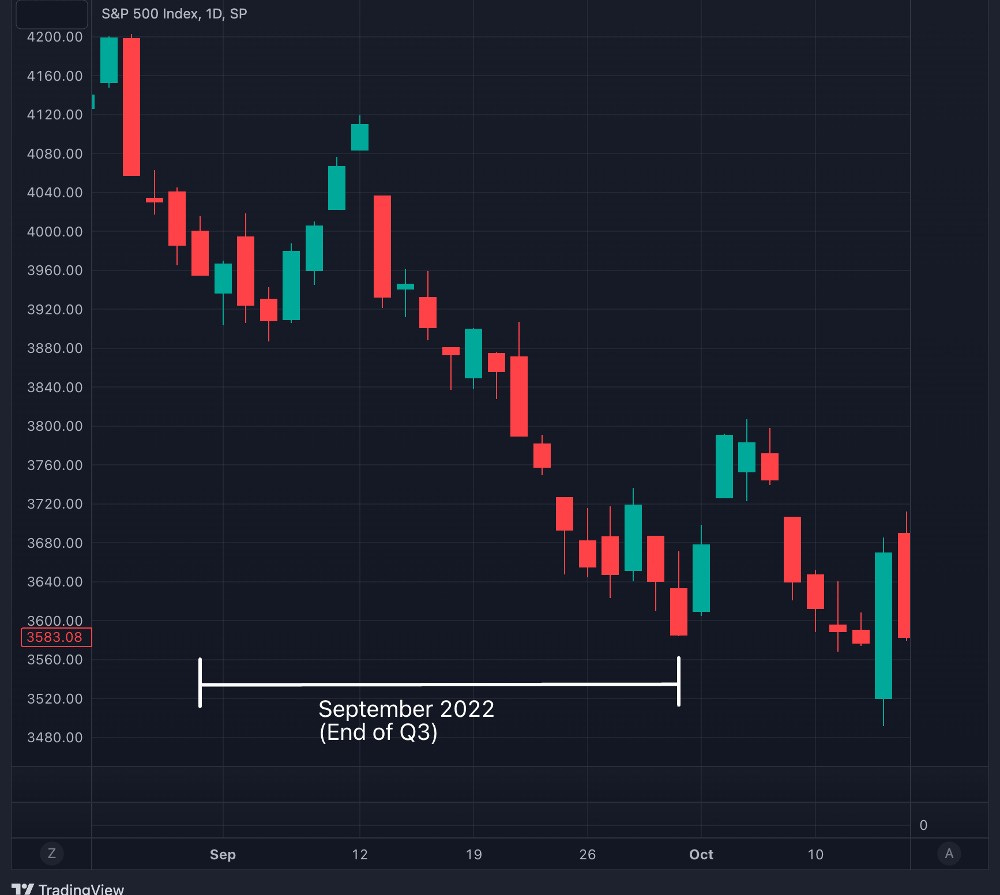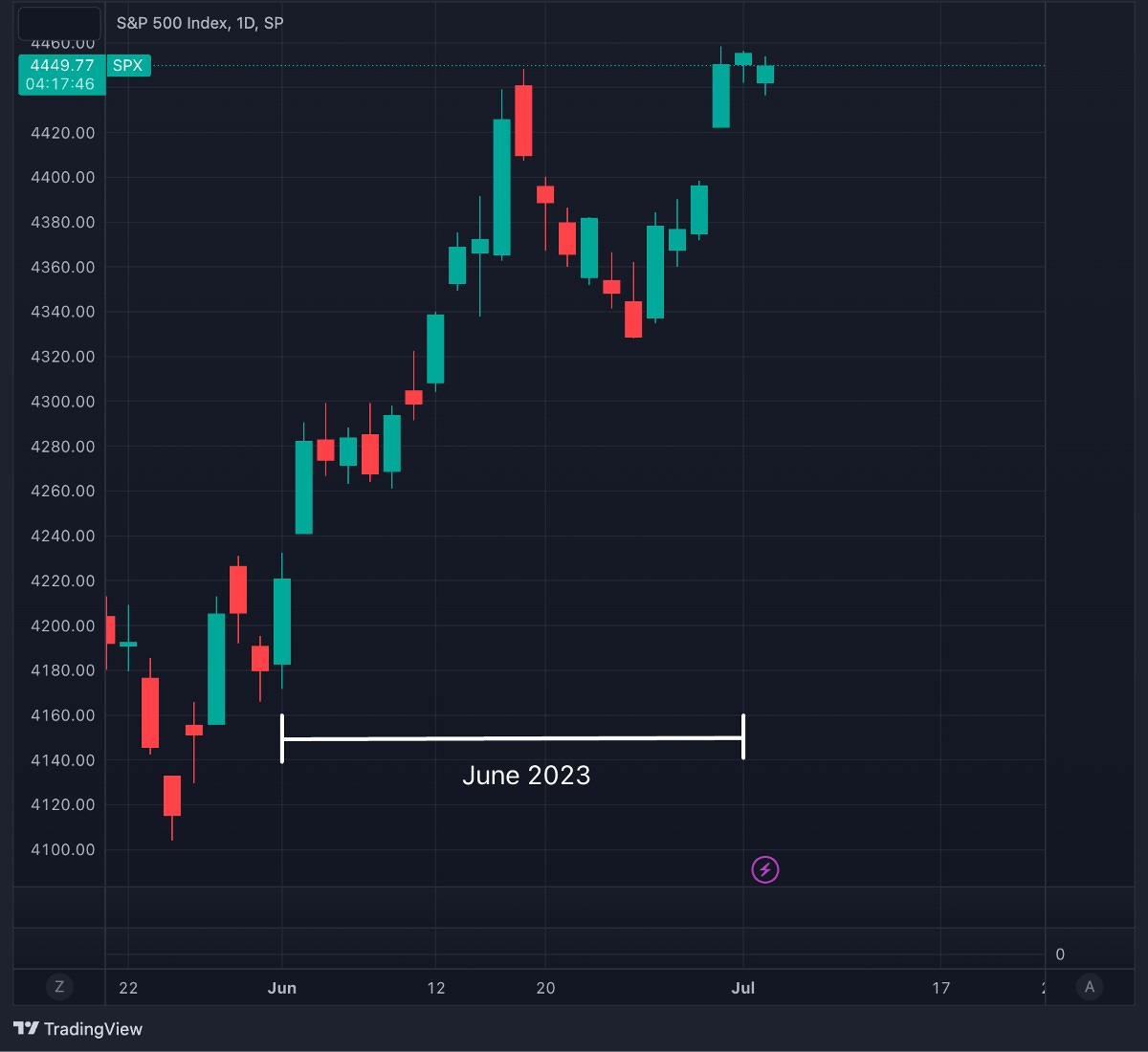Mea Culpa, and Lessons
[3 minute read] My end-of-quarter rebalancing thesis was wrong. Here's how it went awry and what I learned from it.
Readers might remember from the recent “Parthian Shots” newsletter issue that I believed equities would pull back heading into the last week of Q2 (aka end of June).
Why?
Because I anticipated that the outperformance of equities over bonds in the past few months meant that major equities-bonds funds such as Vanguard retirement funds would need to rebalance from equities to bonds by the end of the quarter. In other words, the funds would need to sell equities and buy bonds to return to their target asset allocation percentages.
This didn’t happen. The non-stop buying of the S&P 500 continued in the last week of June and the index closed green.
I was wrong. Mea culpa.
Thankfully, on retrospect, it’s clear what went wrong with the thesis and what the key learnings are from this misstep.
Learning 1: Review History
The thesis that fell flat is that stocks would sell off at the end of June as funds rebalance from stocks to bond. There have been several end-of-quarter months in recent history where this happened and they didn’t look like this year’s June at all. While June started out green and stayed green for the whole month, the market started selling off at the onset of prior stocks-to-bonds rebalancing months and the selling continued throughout the month.
For example, this is September 2022 (end of Q3)…
…and June 2022 (end of Q2).
In both end-of-quarter months, stocks sold off sharply throughout the month but they didn’t look like this past June when the S&P 500 was relentlessly bought up throughout the month.
The point being, if a major move was going to happen in a rebalancing month, history suggests that the market would start moving early in anticipation (such as at the start of the month). One possible reason for this is alpha-focused hedge funds front-running the rebalancing.
While I expected a sell-off to happen in the last few days of this past June, the relentless buying earlier in the month should’ve telegraphed that the market probably wasn’t going to fall at the end of the month.
Lesson 2: Confirmation Bias
Seeking confirmation bias is bad, even when said bias is coming from a reputable major financial institution like the world’s largest bank by market cap (JP Morgan).
Having theorized that rebalancing would occur at the end of June, I checked if similar ideas had been published. It turns out, an analyst at JP Morgan had the same idea and circulated a note warning that, because of how much equities outperformed bonds in Q2 2023, fund managers worldwide likely needed to sell up to $150 billion in stocks to buy bonds. As such, a correction of up to 5% in stocks was to be expected.
This was confirmation bias at its best.
“Even JP Morgan thinks that end-of-quarter rebalancing will cause a sell-off in stocks! How could the thesis go wrong?”
In actuality, analysts at major financial institutions that publicly publish their ideas are often wrong (or at least incompletely correct) and these ideas need to be taken with a heavy grain of salt.
Lesson 3: Liquidity Inertia
Last week, I published a newsletter issue talking about how global liquidity is the predominant factor driving stock prices right now. Building off of this idea, it was reasonable to assume that as liquidity starts to dry up heading into the second half of the year (e.g. US treasury building up the Treasury General Account balance rather than spending it down and the impending resumption of Federal student loan payments), the stock market would experience at best tepid growth and at worst a prolonged bear market.
However, the peril of calling tops like this is that liquidity has inertia. Money that’s poured into the economy takes a while to make its way into the stock market and even if the spigots are tightening up, there’s still significant excess money sloshing in the system that will continue piling into stocks.
Assuming that global liquidity is indeed starting to pull back, it’s unclear when symptoms of lower liquidity will manifest in the stock market. Liquidity inertia means that it’s later rather than sooner.
Fin
In summary, the end-of-quarter rebalancing thesis was wrong, here’s why, and here’s what I learned.






